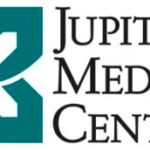 Hospitals and insured doctors are feeling a bit relieved these days about their liability exposure for doctors who are uninsured. With the number of bare doctors rising, hospitals and insured doctors had become increasingly at risk of becoming the “deep pockets” in some medical malpractice lawsuits. However, with recent legislative action and legal decisions, this trend appears to have reversed.
Hospitals and insured doctors are feeling a bit relieved these days about their liability exposure for doctors who are uninsured. With the number of bare doctors rising, hospitals and insured doctors had become increasingly at risk of becoming the “deep pockets” in some medical malpractice lawsuits. However, with recent legislative action and legal decisions, this trend appears to have reversed.
In the latest session of the Florida Legislature, the fairly long standing rule of joint and several liability was overturned. Under this old law, hospitals and insured physicians were sometimes forced to carry the liability load of uninsured doctors. Now without this rule, uninsured doctors will simply be more liable for their own actions and not have as much ability to shift their legal responsibility to co-defendants, which are usually hospitals and insured doctors.
On the legal front, The Florida Supreme Court recently favorably granted review of one court case decision, Plantation General Hospital Ltd. V. Horowitz in Floridas Fourth District that had worried hospital defense attorneys. In another positive move for hospitals, the Court has denied review of a case, North Miami Medical Center v. Miller, in which the lower court had ruled in favor of the hospital defendant on the grounds that since a doctor had chosen to satisfy the financial responsibility law by electing to be personally responsible the hospital had done nothing wrong nor violated the financial responsibility statute regarding doctors ability to be bare. Of note to hospitals is that to bring the defenses of this favorable case to bear in a lawsuit, hospitals should collect from their uninsured doctors the actual copy of the financial responsibility form that bare doctors are required to file with the Board of Medicine. In the past, some hospitals have either not collected any of these financial responsibility forms or asked their uninsured doctors just to sign one of the hospitals own forms, but experts say that a copy of the filed form is the best.
The results of the repeal of the joint and several law and recent Supreme Court actions will be that more bare doctors will venture back into the insurance market, and fewer insured doctors will drop their malpractice insurance coverage. Those doctors remaining bare are likely to have their asset protection plans tested more often in cases where mistakes are made that result in serious injury. Also, as a consequence of the repeal of joint and several liability, those hospitals with a number of uninsured doctors on staff could see the recent increases in their professional liability insurance rates lessen. Likewise, insured doctors will see their rates decrease in areas like South Florida that has had many doctors practicing bare.
Post Views: 717
 Hospitals and insured doctors are feeling a bit relieved these days about their liability exposure for doctors who are uninsured. With the number of bare doctors rising, hospitals and insured doctors had become increasingly at risk of becoming the “deep pockets” in some medical malpractice lawsuits. However, with recent legislative action and legal decisions, this trend appears to have reversed.
Hospitals and insured doctors are feeling a bit relieved these days about their liability exposure for doctors who are uninsured. With the number of bare doctors rising, hospitals and insured doctors had become increasingly at risk of becoming the “deep pockets” in some medical malpractice lawsuits. However, with recent legislative action and legal decisions, this trend appears to have reversed. 


























